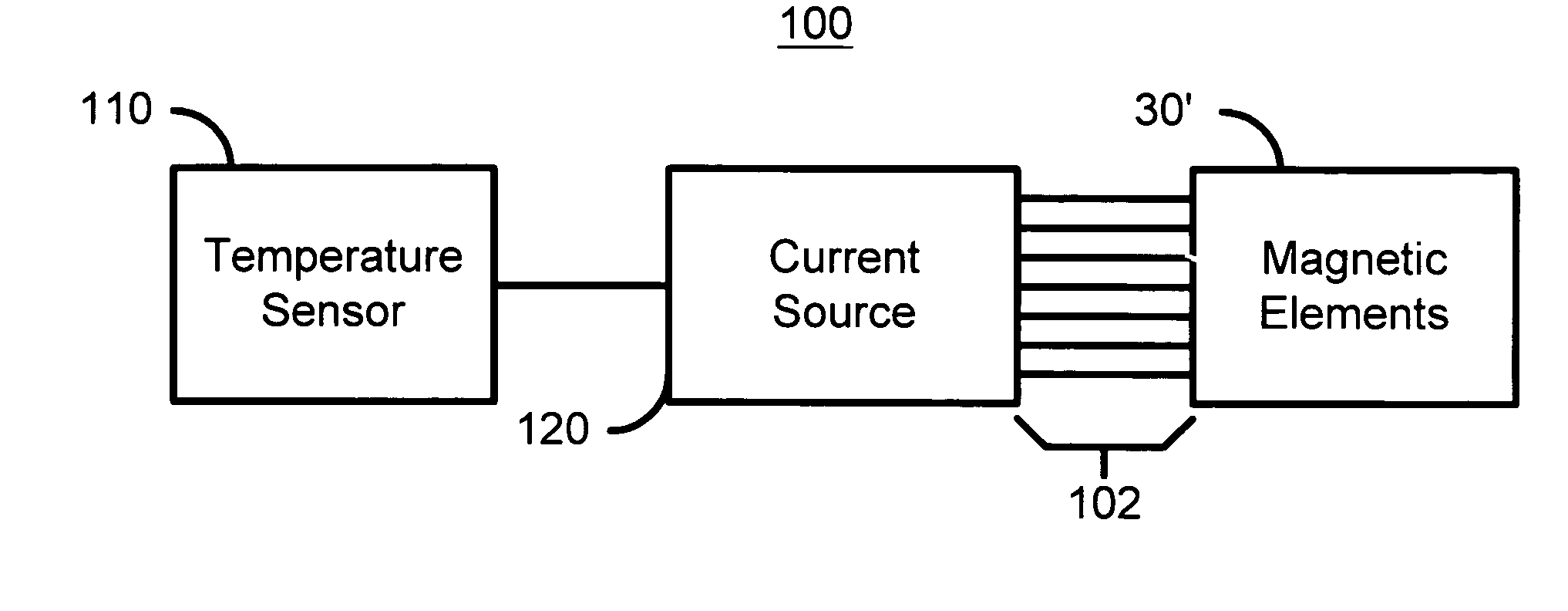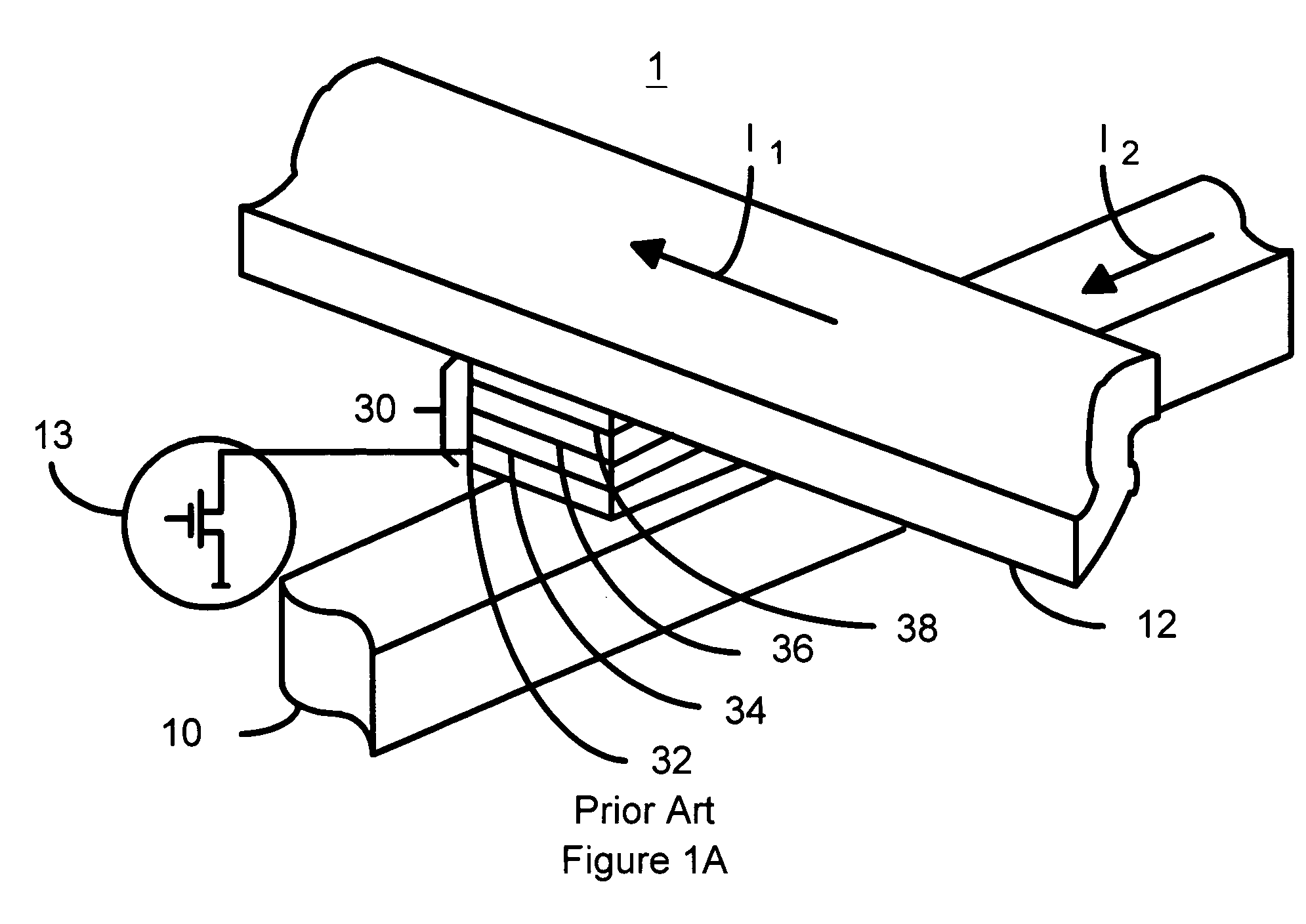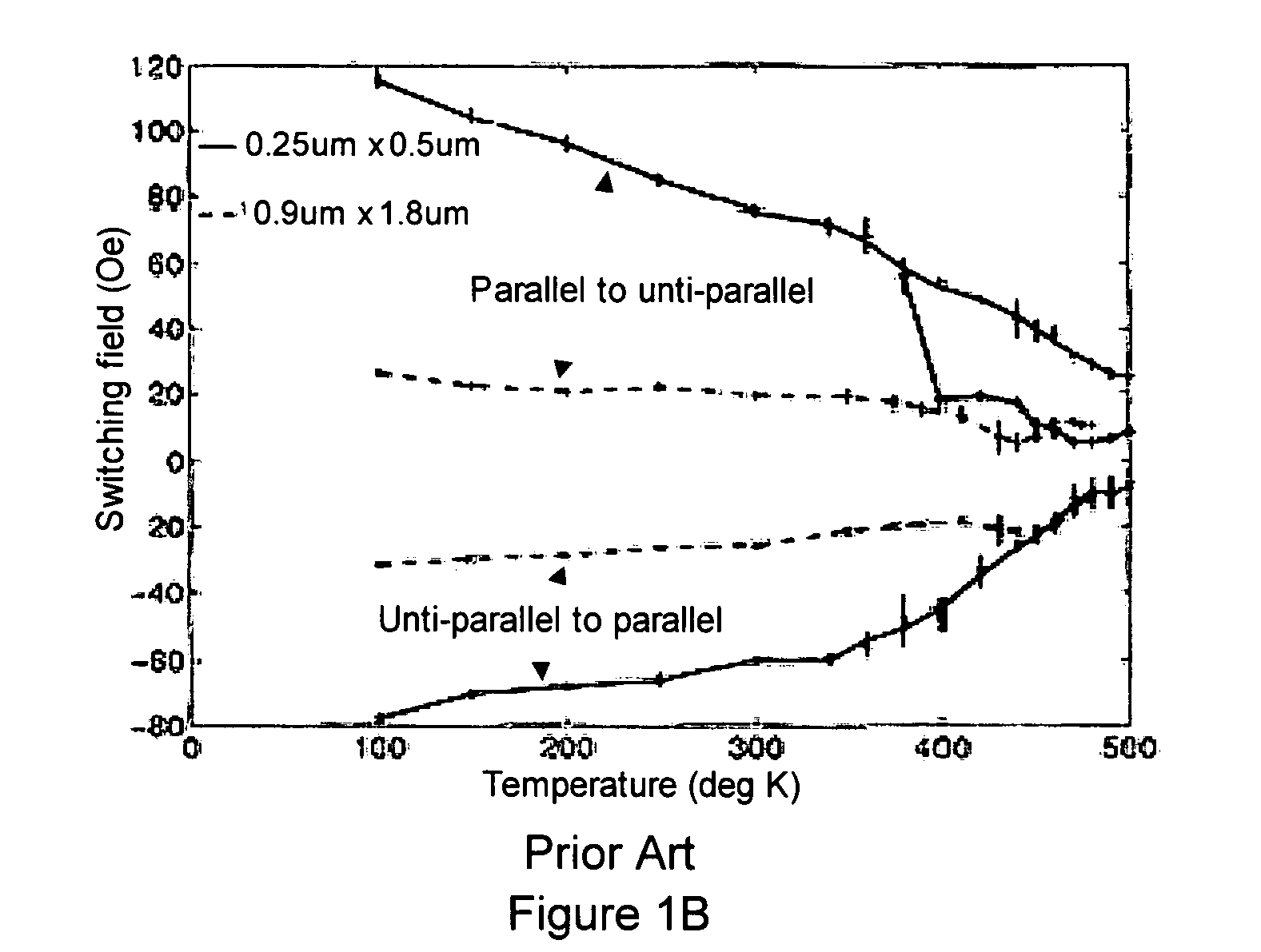Method and system for providing temperature dependent programming for magnetic memories
a temperature-dependent programming and magnetic memory technology, applied in the direction of information storage, static storage, digital storage, etc., can solve the problems of volatile dram, low speed and high power consumption, and the loss of data of dram, so as to improve the performance of magnetic memory
- Summary
- Abstract
- Description
- Claims
- Application Information
AI Technical Summary
Benefits of technology
Problems solved by technology
Method used
Image
Examples
second embodiment
[0045]FIG. 5B depicts a voltage circuit 130″ for use in a system for use in providing temperature dependent programming in accordance with the present invention. The voltage circuit 130″ shown in FIG. 5B provides a greater change in VUPTAT (a greater temperature sensitivity) than the voltage circuit 130′ depicted in FIG. 5A. Referring to FIGS. 5A and 5B, the voltage circuit 130″ includes analogous components to the voltage circuit 130′. Consequently, these components are labeled similarly. The voltage circuit 130″ also includes a current source 139. The current source 139 produces a current, IPTAT, that is proportional to the absolute temperature. Consequently, when the transistor 132′ produces more current at high temperature, the additional current can be bypassed by current source 139. As a result, the current passing through the diodes 134′, 136′, and 138′ does not have to increase, or may be designed to decrease, yielding a greater change in VUPTAT with temperature.
third embodiment
[0046]FIG. 5C depicts a voltage circuit 130′″ for use in a system for providing temperature dependent programming in accordance with the present invention. The voltage circuit 130′″ produces a lower change in the output voltage, VUPTAT (a lower temperature sensitivity) than the voltage circuit 130′ depicted in FIG. 5A. Referring to FIGS. 5A and 5C, the voltage circuit 130′″ includes transistor 132′″ and diodes 134″ and 136″. These components are preferably the same as the transistor 132 and diodes 134 and 136. However, in lieu of the diode 138, the voltage circuit 130′″ utilizes a resistor 138″. Because of the use of the resistor 138″, the change in output voltage with temperature is reduced. Stated differently, the resistor 138″ decreases the temperature sensitivity of the output of the voltage circuit 130′″.
[0047]FIG. 6 depicts one embodiment of a current mirror 150′ for use in a system for use in providing temperature dependent programming in accordance with the present invention...
PUM
 Login to View More
Login to View More Abstract
Description
Claims
Application Information
 Login to View More
Login to View More - R&D
- Intellectual Property
- Life Sciences
- Materials
- Tech Scout
- Unparalleled Data Quality
- Higher Quality Content
- 60% Fewer Hallucinations
Browse by: Latest US Patents, China's latest patents, Technical Efficacy Thesaurus, Application Domain, Technology Topic, Popular Technical Reports.
© 2025 PatSnap. All rights reserved.Legal|Privacy policy|Modern Slavery Act Transparency Statement|Sitemap|About US| Contact US: help@patsnap.com



